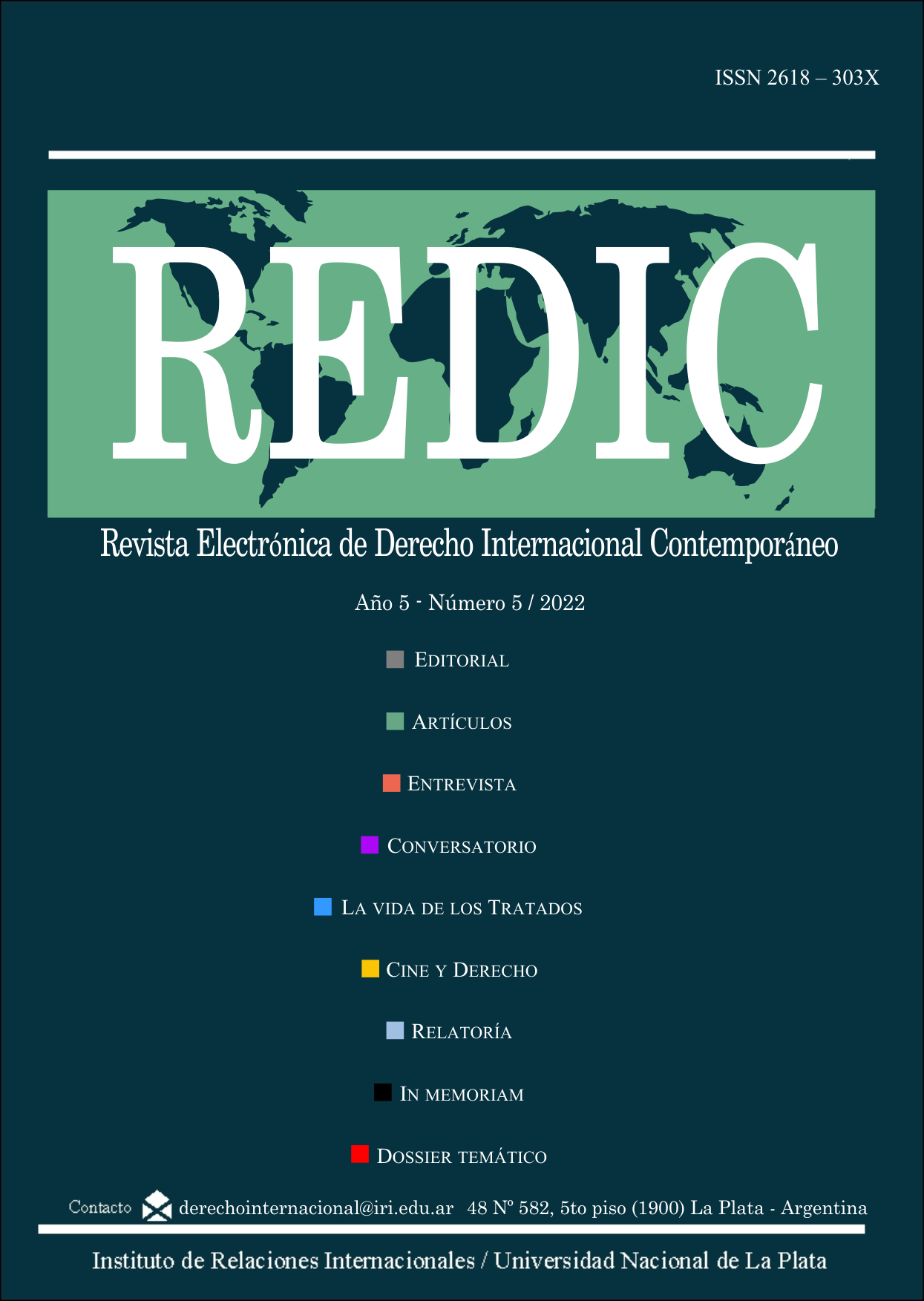Control of conventionality: the finishing line or an interpretation road?
Reflecting upon the scope of the doctrine of the Inter-American Court of Human Rights
DOI:
https://doi.org/10.24215/2618303Xe033Keywords:
Inter-American Human Rights System, Conventionality Control, Constitutional Reasoning, judicial interpretation , principle of proportionality , principle pro personaeAbstract
The doctrine of conventionality control has proven controversial from its very beginnings, and has both supporters and detractors, who have ventured into a dispute that does not seem to end. In this work, we do not intend to take sides for or against the legitimacy of conventionality control, but rather to ask a specific question about the scope that such doctrine has or that it could have. Since the creation of the doctrine, the Inter-American Court of Human Rights has been shaping various aspects of the doctrine and it could be argued that progress has been made towards its expansion. However, the Court has not yet dealt with the following question, which we wish to tackle here: should we understand that conventionality control includes only the obligation to apply the standards that arise from the text of the Convention plus the interpretations of the Court, or does it also involve the duty to adopt the way in which they are to be applied? In other words, we are interested in exploring whether, in the current situation or through future developments, this control could be understood to comprise not only interpretive results but also the adoption of certain hermeneutical guidelines.
Downloads
References
Alexy, R. (1985). Theorie der grundrechte (Teoría de los derechos fundamentales). Centro de Estudios Constitucionales.
Alexy, R. (2010). La fórmula del peso. En M. Carbonell y P. Grández Castro (Coord.), El principio de proporcionalidad en el derecho contemporáneo (pp. 13-36). Palestra.
Caminos, P. (2014). El principio de proporcionalidad: ¿Una nueva garantía de los derechos constitucionales? Revista Electrónica del Instituto de Investigaciones “Ambrosio L. Gioja”, 8(13), 51-74. http://www.derecho.uba.ar/revistas-digitales/index.php/revista-electronica-gioja/article/view/65
Colombo Murúa, I. (2017). Control de convencionalidad e interpretación constitucional. Un replanteo necesario. Revista Jurisprudencia Argentina, 1, 807-823.
Courtis, C. (2006). La prohibición de regresividad en materia de derechos sociales: apuntes introductorios. En C. Courtis (Comp.), Ni un paso atrás. La prohibición de regresividad en materia de derechos sociales (pp. 3-25). Centro de Estudios Legales y Sociales.
De Casas, I. (2019). ¿Qué son los estándares de derechos humanos? Revista Internacional de Derechos Humanos, 9(2), 291-301. https://ojs.austral.edu.ar/index.php/ridh/article/view/711
Drnas de Clément, Z. (2015). La complejidad del principio pro homine. Doctrina, Jurisprudencia Aargentina, fascículo No. 12, 98-111.
Dulitzky, A. E. (2015). An Inter-American Constitutional Court? The Intervention of the Conventionality Control by the Inter-American Court of Human Rights. Texas International Law Journal, 50, 46-91. https://law.utexas.edu/faculty/adulitzky/69-inter-amer-constitutional-court.pdf
González Domínguez, P. (2017). La doctrina del control de convencionalidad a la luz del principio de subsidiariedad. Revista del Centro de Estudios Constitucionales, 15(1), 55-98.
Habermas, J. (1998). Between Facts and Norms (Facticidad y validez). Trotta.
Hitters, J. C. (2021). ¿Son vinculantes los pronunciamientos de la Comisión y de la Corte Interamericana de Derechos Humanos? (Control de constitucionalidad y convencionalidad). En J. C. Hitters, El control de convencionalidad en el sistema interamericano. Efectos. Obligatoriedad (pp. 131-155). Instituto de Estudios Constitucionales del Estado de Querétaro.
Midón, M. (2016). Control de Convencionalidad. Argentina: Editorial Astrea.
Minatta, O. (2018). Cuarta etapa (2002-2006): Una Corte activista. En A. Santiago y L. Bellochio (Dir.), Historia de la Corte Interamericana de Derechos Humanos (pp. 215-290). La Ley.
Perello Domenech, I. (1997). El principio de proporcionalidad y la jurisprudencia constitucional. Jueces para la democracia, 28, 69-75.
Sagüés, N. P. (2010). Obligaciones internacionales y control de convencionalidad. Revista Estudios Constitucionales, 1, 117-136.
Additional Files
Published
How to Cite
Issue
Section
License
Copyright (c) 2022 Gisela Ferrari, Fátima López Poletti

This work is licensed under a Creative Commons Attribution-NonCommercial-ShareAlike 4.0 International License.
Aquellos autores/as que tengan publicaciones con esta revista, aceptan los términos siguientes:
- Los autores/as conservarán sus derechos de autor y garantizarán a la revista el derecho de primera publicación de su obra, el cuál estará simultáneamente sujeto a la Licencia de reconocimiento de Creative Commons (BY-NC-SA) 4.0 que permite a terceros compartir la obra siempre que se indique su autor y su primera publicación esta revista, no se haga uso comercial, y si se remezcla, se transforma o se crea a partir del material, se debe distribuir bajo la misma licencia del original.
- Los autores/as podrán adoptar otros acuerdos de licencia no exclusiva de distribución de la versión de la obra publicada (p. ej.: depositarla en un archivo telemático institucional o publicarla en un volumen monográfico) siempre que se indique la publicación inicial en esta revista.
- Se permite y recomienda a los autores/as difundir su obra a través de Internet (p. ej.: en archivos telemáticos institucionales o en su página web) antes y durante el proceso de envío, lo cual puede producir intercambios interesantes y aumentar las citas de la obra publicada. (Véase El efecto del acceso abierto).





















